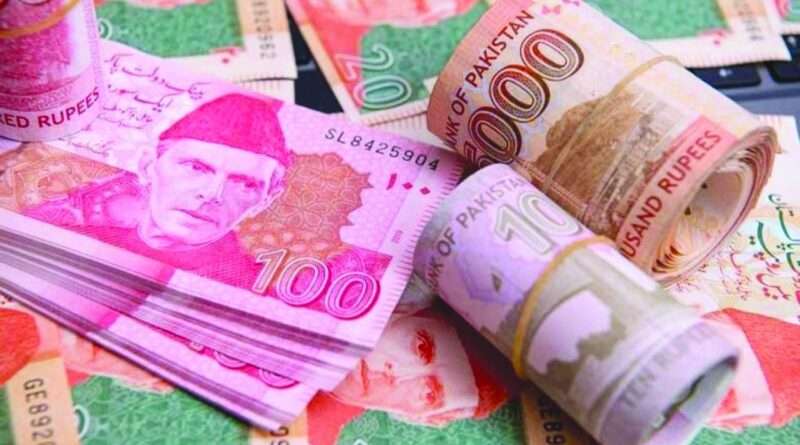Moody’s Upgrades Pakistan’s Banking Outlook: Positive Growth Forecast Despite Debt Risks
|
Getting your Trinity Audio player ready...
|
Moody’s Elevates Banking Sector from Stable to Positive
Moody’s Investors Service, a leading global credit rating agency, has upgraded Pakistan’s banking sector outlook from stable to positive. This upgrade reflects improving economic conditions, stronger government liquidity, and a stabilizing external position. However, risks related to long-term debt sustainability and high exposure to government securities continue to pose challenges for the sector.
The improved outlook aligns with Pakistan’s sovereign rating and is expected to boost investor confidence, enhance private-sector investments, and stabilize the financial sector.
Economic Growth Forecast: 3% GDP in 2025
Steady Growth Amid Economic Recovery
Moody’s forecasts that Pakistan’s GDP will grow by 3% in 2025, marking a significant recovery from previous years. The economy expanded by 2.5% in 2024 following a contraction of -0.2% in 2023. This economic growth is being driven by:
- Lower inflation rates (expected to drop to 8% in 2025 from 23% in 2024)
- Easing monetary policy with policy rate cuts
- Increased private-sector investment
Ali Najib, Head of Equity Sales at Insight Securities, stated, “This development will positively impact Pakistan’s economy by encouraging private-sector investment due to lower borrowing costs, boosting consumer spending, and enhancing financial sector confidence.”
Pakistan’s Banking Sector: Key Strengths and Challenges
Key Strengths Supporting Growth
- Resilient Financial Performance: Banks in Pakistan have shown strong profitability, capital buffers, and liquidity despite economic challenges.
- Lower Inflation and Borrowing Costs: A drop in inflation is expected to spur investment and credit expansion.
- Regulatory Support & IMF Backing: The $7 billion IMF Extended Fund Facility has stabilized external financing, further boosting economic confidence.
- Sovereign Rating Improvement: The government’s improved financial standing positively impacts the banking sector.
Challenges Facing Pakistan’s Banking Industry
- High Exposure to Government Securities: Currently, 55% of banking assets are tied to government securities, making banks vulnerable to sovereign risks.
- Debt Sustainability Risks: Pakistan’s weak fiscal position and liquidity challenges could pose long-term risks.
- Declining Net Interest Margins: With interest rate cuts, banks may struggle to maintain profitability as they rely heavily on government securities.
- Problem Loans and Credit Risks: Problem loans have risen to 8.4% of total loans, highlighting challenges in the lending sector.
Interest Rate Cuts and Their Impact
Declining Interest Rates and Loan Growth
With the State Bank of Pakistan cutting interest rates to 12%, borrowing costs are expected to decrease, leading to:
- Lower net interest margins due to reduced returns on government securities.
- Potential increase in private-sector lending, though demand may remain subdued.
- Removal of the Advance-to-Deposit Ratio (ADR) tax in 2025, easing regulatory pressures on banks.
Corporate Tax Adjustments and Profitability
While the removal of ADR tax relieves banks, higher corporate tax rates (44% from 39%) could offset potential gains. Moody’s projects a return on assets (ROA) between 0.9% and 1.0% in 2025.
Banking Sector Capital Buffers & Deposit Trends
Strong Capital Buffers and Liquidity
Despite challenges, banks maintain strong capital buffers, with:
- Tier 1 capital at 17%
- Total capital-to-risk-weighted assets at 21.5%
Customer Deposits as a Primary Funding Source
Approximately 60% of banking assets are funded through customer deposits, ensuring stable liquidity. Additionally, rising remittances further strengthen liquidity.
Future Outlook: What Lies Ahead for Pakistan’s Banking Sector?
Growth Projections & Investment Climate
Moody’s projects 4% GDP growth by 2026, supported by:
- Lower interest rates boosting lending
- SME financing initiatives driving loan growth
- Stable foreign exchange reserves mitigating external risks
Potential Risks and Uncertainties
- Ongoing external vulnerabilities could impact banking sector stability.
- Debt servicing and fiscal discipline remain crucial to maintaining economic momentum.
- Inflationary shocks or global economic slowdowns could challenge Pakistan’s financial system.
FAQs
1. Why did Moody’s upgrade Pakistan’s banking sector outlook to positive?
Moody’s upgraded the outlook due to stronger government liquidity, a stable external position, and expected economic recovery with a 3% GDP growth forecast for 2025.
2. What are the key risks for Pakistan’s banking sector despite the positive outlook?
Risks include high exposure to government securities, long-term debt sustainability concerns, declining net interest margins, and rising problem loans.
3. How will lower interest rates impact Pakistan’s economy?
Lower interest rates will reduce borrowing costs, boost private-sector investments, and support economic growth, but they may also narrow bank profitability.
4. What role does the IMF program play in Pakistan’s financial stability?
The $7 billion IMF Extended Fund Facility provides external financing stability, strengthens economic confidence, and supports fiscal reforms.
5. What is the future outlook for Pakistan’s banking sector?
Moody’s expects continued GDP growth (4% by 2026), stable liquidity, and increased lending, but ongoing debt and fiscal challenges could impact long-term stability.




